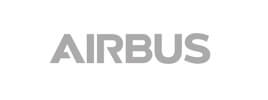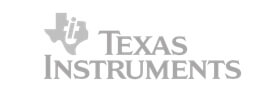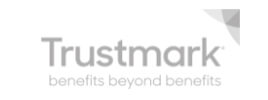Everyone deserves to feel safe and accepted wherever they are, including the workplace. Under Title VII of the Civil Rights Act of 1964, the Age Discrimination in Employment Act (ADEA) of 1967, and the Americans with Disabilities Act (ADA) of 1990, bullying, discrimination and harassment in the workplace in the US is unlawful and non-compliance can lead to severe consequences for businesses that ignore their obligations and/or create unsafe and toxic workplace environments.
Harassment and discrimination training that help management teams create ethically-aware and inspired workforces
Get instant access to LRN's anti-harassment & discrimination e-learning sample
Keep your business up to date with harassment prevention training requirements
US state requirements and deadlines for harassment prevention training are unique and change often. Check out LRN's free handbook to find your state's most recent guidelines. Our all-in-one harassment prevention course aligns with US and international training requirements, using adaptive technology to deliver the right content to the right person in the right place.

What are the different types of bullying, harassment, and discrimination in your business?
Even though harassment and discrimination have been illegal for decades, they still happen and can take many different forms. In order to eradicate toxic workplace culture and mitigate risk from costly legal action, companies need to create an environment where people can quickly spot bullying, harassment, and discrimination and feel supported to speak up. The best ways to achieve this are by providing clear policies and ongoing educational programmes that ensure awareness and zero tolerance.
It’s also important to keep in mind that anyone can bully others. According to research from the Workplace Bullying Institute, about 70% of bullies were male, and about 30% are female and 61% of bullying comes from bosses or supervisors, while 33% comes from co-workers.
Some common examples of harassment and discrimination that can occur in the workplace include:
Harassment
The United Nations defines harassment as any improper and unwelcome conduct that might reasonably be expected or perceived to annoy, alarm, abuse, demean, intimidate, belittle, humiliate, or embarrass another person. Workplace harassment examples include:
-
Personal harassment: Inappropriate comments, offensive jokes, humiliation, critical remarks, or ostracizing behaviors.
-
Physical harassment: Direct threats of intent to inflict harm, physical attacks, threatening behavior, or destroying property to intimidate
-
Power harassment: Excessive demands that are impossible to meet, demeaning demands far below the employee’s capability, or intrusion into the employee’s personal life
-
Psychological harassment: Isolating or denying the victim’s presence, belittling or trivializing the victim’s thoughts, discrediting or spreading rumors about the victim, or opposing or challenging everything the victim says
-
Sexual harassment: Sharing sexual photos (pornography), posting sexual posters, sexual comments or jokes, questions about one’s sex life or sexual orientation (including gender identity), inappropriate sexual touching, inappropriate sexual gestures, or invading personal space in a sexual way
-
Third-party harassment: Harassing behavior from a client, customer, contractor, or another person from outside of the business
Discrimination
Discrimination is any unfair treatment or arbitrary distinction—direct or indirect—based on someone’s protected classes. Here are some examples of discrimination at work:
-
Racial discrimination (including race, color, and ethnicity)
-
Disability discrimination
-
Pregnancy discrimination (including maternity/paternity leave)
-
Gender discrimination
-
Age discrimination
-
Sexual orientation discrimination
-
Religious discrimination
-
Parental status discrimination
-
Genetic information (including family medical history)
Bullying
Bullying is a common type of workplace harassment. Unlike harassment, bullying is not classified as illegal—but it can be classed as harassment if the behaviour is repeated over time to the point that it creates an intimidating, hostile, or abusive environment. Examples of workplace bullying include:
-
Verbal bullying: Mockery, humiliation, jokes, gossip, or other spoken abuse
-
Intimidation bullying: Threats, social exclusion in the workplace, spying, or other invasions of privacy
-
Bullying related to work performance: Wrongful blame, work sabotage or interference, or stealing or taking credit for ideas
-
Retaliatory bullying: In some cases, talking about the bullying can lead to accusations of lying, further exclusion, refused promotions, or other retaliation
-
Cyberbullying: Sharing humiliating things about the victim by mass email or mass chat, spreading lies or gossip about the victim on social media, or sending harassing instant messages or text messages directly to the victim
-
Institutional bullying: When a workplace accepts, allows, and even encourages bullying to take place. This bullying might include unrealistic production goals, forced overtime, or singling out those who can’t keep up.
How does harassment and discrimination impact your business and why is it important to address?
Studies show that we spend at least one-third of our lives at work—or over 90,000 hours in a person’s lifetime. Creating a harassment and discrimination-free workplace should not only be about mitigating risk and meeting regulatory obligations, but also ensuring that your employees—who spend the majority of their waking hours at work—are looked after and nurtured in a positive workplace environment where they can be themselves.
Harassment and discrimination can drain employees' motivation, productivity, and engagement at work—resulting in high staff turnover as well as issues with recruiting new talent. Workplaces with high rates of bullying and harassment can also experience serious negative consequences, such as:
- Liability and financial loss from legal costs or investigations
- Decreased productivity and morale
- Increased employee absences
- High staff turnover rates
- Poor team dynamics
- Reduced trust, effort, and loyalty from employees
- Reduced job satisfaction and motivation
- Issues with employee commitment, loyalty and turnover
- Reduced reputation and recruitment
Find out more how harassment affects the workplace here >
What are employers’ legal obligations in the US?
In the United States, harassment because of someone's age, disability, race, religion or belief, sex, sexual orientation, and other protected characteristics is unlawful under Title VII of the Civil Rights Act of 1964, the Age Discrimination in Employment Act (ADEA) of 1967, the Americans with Disabilities Act (ADA) of 1990, and other laws enforced by the US Equal Employment Opportunity Commission (EEOC).
The laws enforced by EEOC protect you from employment discrimination when it involves:
- Unfair treatment because of your race, color, religion, sex (including pregnancy, gender identity, and sexual orientation), national origin, disability, age (age 40 or older), or genetic information.
- Harassment by managers, co-workers, or others in your workplace, because of your race, color, religion, sex (including pregnancy, gender identity, and sexual orientation), national origin, disability, age (age 40 or older), or genetic information.
- Denial of a reasonable workplace change that you need because of your religious beliefs or disability.
- Improper questions about or disclosure of your genetic information or medical information.
- Retaliation because you complained about job discrimination or assisted with a job discrimination proceeding, such as an investigation or lawsuit.
The laws enforced by EEOC are not the only laws that apply to people experiencing harassment or discrimination. You may have additional rights under other federal, state, or local laws. For example, other federal laws require your employer to pay you a minimum hourly wage. Some state and local discrimination laws may offer you broader protection than the laws enforced by EEOC, especially if you work for an employer with fewer than 15 employees or believe the unfair treatment is because of your age (because federal law only protects people who are 40 or older from age discrimination at work), or some other reason not covered by federal law.
You can find information about state and local agencies in your area by calling the EEOC at 1-800-669-4000 or by going to the EEOC's Field Office List and Jurisdiction Map and selecting the office closest to you.
The US legal position on bullying is more complex, as there’s currently no federal law that makes general workplace bullying unlawful. However, more than 30 state legislatures have introduced legislation to outlaw workplace bullying. Only a couple of states have actually passed laws, which require certain employers to train employees about workplace bullying.
How to prevent bullying and harassment in the workplace
In order to prevent bullying and harassment in the workplace, you need to have strong processes in place as well as full commitment to the mission by the entire organisation. It is crucial for you to include the following elements as part of your strategy:
- Strong sexual harassment training programme that is measurable
- Anti-harassment and discrimination policy
- Robust grievance procedure or consider alternative complaint systems such as:
- The ombuds office; or
- Voluntary dispute resolution that relies on mediation
- Create a clear process for dealing with perpetrators
- Transform your company culture so that fighting harassment becomes part of your mission
- Consider whether mandatory arbitration contracts are right for your business
- Implement a train-the-trainer programme where employees become anti-harassment champions
- Build a harassment task force
- And last but not least, publish the numbers—if you publish data that exposes a problem, managers will focus on it, and solving the problem will become part of the culture.
How to address discrimination in the workplace
Think about building an anti-harassment and discrimination programme that provides ongoing learning, centered around measurable and specific goals, and has full backing from every employee of the organisation whether they are part of the senior leadership team or an entry-level worker.
Include the following:
- A multi-touch learning campaign incorporating not only training but other communication tactics and formats
- Put a plan in place to address discrimination and power dynamics
- Emphasise in your training programme that not only women can be targets of sexual harassment, and that men and people who do not identify within the gender binary are also affected
- Ensure leadership support as well as their full dedication to the message and holding harassers accountable for their actions
- Include clear goals, follow-up processes, and measurement of programme effectiveness, which will also enable you to address any areas that are not working or require optimisation
Looking to find out how your business can meet its legal obligations?
What are the steps compliance, legal, and HR departments should take to address harassment and discrimination at work?
Top down or bottom up, preventing bullying, harassment and discrimination at work is everyone’s responsibility—from the board of directors, to managers and supervisors, to any other employee.
Employers should have a robust and well-communicated policy and guidance that clearly states the organization's commitment to promoting a positive workplace culture and zero tolerance to any form of bullying, harassment, and discrimination.
Here are five key steps to addressing harassment and discrimination at work:
-
STEP 1
Create an environment of respect and put measures in place to prevent toxic workplace culture
Create an environment of respect and put measures in place to prevent toxic workplace culture
Prevention and proactively mitigating risk is always better than reactive firefighting. Putting measures in place to minimize the risk of a toxic work culture developing and promoting a positive climate at work for everyone based on personal respect and dignity will help to prevent inappropriate behavior. Senior leaders should communicate a clear vision of what a climate of dignity and respect looks like and demonstrate strong values supporting the organization's stance.
-
STEP 2
Develop a clear reporting and investigation process
Develop a clear reporting and investigation process
To quickly identify and address any occurrences of harassment and discrimination at work, have a clear process for how to report and investigate allegations of misconduct. Employees should know the steps they need to take if they are dealing with harassment or witness a colleague being bullied. Having an open and positive workplace culture that values speaking up will also make employees feel safe and encouraged to come forward, saving you time and legal hassle down the line.
-
STEP 3
Provide employee guidance and counselling
Provide employee guidance and counseling
Any employee who makes a harassment complaint should have access to guidance and counseling, whether it’s from someone inside the organization trained for this role or from an outsourced service. This allows them to talk in confidence about any inappropriate behavior they’ve experienced or witnessed so they can discuss options and decide themselves whether to make a complaint. Guidance and counseling can be offered to people whose behavior is unacceptable, as well as those affected.
-
STEP 4
Develop anti-harassment and discrimination policies and communications
Develop anti-harassment and discrimination policies and communications
A well-designed anti-harassment policy and communication plan are both essential to tackle workplace bullying or harassment. They should give examples of what constitutes harassment, bullying, and intimidating behavior and explain their damaging effects on employees and the business. It's also important to explain why workplace harassment, bullying, and discrimination will not be tolerated and clarify any legal implications and potential personal liability. To ensure effectiveness, regularly monitor and review your policies and any records of complaints—including why and how they occurred, who was involved and where—to ensure resolution and no victimization.
-
STEP 5
Build a strong anti-harassment and discrimination training program
Build a strong anti-harassment and discrimination training program
Having effective and engaging anti-harassment and discrimination training is a must for any workplace, whether you’re looking at prevention and risk mitigation or are addressing a recent non-compliance.
Effective training should be relevant to the employee population, interactive, and scenario-based. Training should also provide ample opportunity for learners to prove their knowledge through exercises that reinforce key concepts. Reaching your entire workforce through device agnostic training, online and offline learning options, easy-to-understand language, and easily trackable program progress data is also key to success.
Create an environment of respect and put measures in place to prevent toxic workplace culture
Prevention and proactively mitigating risk is always better than reactive firefighting. Putting measures in place to minimize the risk of a toxic work culture developing and promoting a positive climate at work for everyone based on personal respect and dignity will help to prevent inappropriate behavior. Senior leaders should communicate a clear vision of what a climate of dignity and respect looks like and demonstrate strong values supporting the organization's stance.
Develop a clear reporting and investigation process
To quickly identify and address any occurrences of harassment and discrimination at work, have a clear process for how to report and investigate allegations of misconduct. Employees should know the steps they need to take if they are dealing with harassment or witness a colleague being bullied. Having an open and positive workplace culture that values speaking up will also make employees feel safe and encouraged to come forward, saving you time and legal hassle down the line.
Provide employee guidance and counseling
Any employee who makes a harassment complaint should have access to guidance and counseling, whether it’s from someone inside the organization trained for this role or from an outsourced service. This allows them to talk in confidence about any inappropriate behavior they’ve experienced or witnessed so they can discuss options and decide themselves whether to make a complaint. Guidance and counseling can be offered to people whose behavior is unacceptable, as well as those affected.
Develop anti-harassment and discrimination policies and communications
A well-designed anti-harassment policy and communication plan are both essential to tackle workplace bullying or harassment. They should give examples of what constitutes harassment, bullying, and intimidating behavior and explain their damaging effects on employees and the business. It's also important to explain why workplace harassment, bullying, and discrimination will not be tolerated and clarify any legal implications and potential personal liability. To ensure effectiveness, regularly monitor and review your policies and any records of complaints—including why and how they occurred, who was involved and where—to ensure resolution and no victimization.
Build a strong anti-harassment and discrimination training program
Having effective and engaging anti-harassment and discrimination training is a must for any workplace, whether you’re looking at prevention and risk mitigation or are addressing a recent non-compliance.
Effective training should be relevant to the employee population, interactive, and scenario-based. Training should also provide ample opportunity for learners to prove their knowledge through exercises that reinforce key concepts. Reaching your entire workforce through device agnostic training, online and offline learning options, easy-to-understand language, and easily trackable program progress data is also key to success.

How to deal with age discrimination in the workplace

What to do if an employee is sexually harassed

What should be included in an anti-harassment policy
Learn how to identify and prevent
sexual harassment in the workplace
Why is anti-harassment and
discrimination training important?

Harassment prevention training raises awareness across the organization of both what harassment is and the role employees can play in helping to create a safe workplace culture free from harassment. Anti-harassment and discrimination training is important to construct a safe workplace culture. However, many companies have seen an increase in workplace harassment complaints—and not all of them offer essential training. By educating employees, anti-harassment and discrimination training helps them understand what sexual harassment is and how to identify if it is taking place. The small investment made by businesses to provide training is well worth the payoff for their employees.
Find out more about why harassment and discrimination training is important >
What are the different types of anti-harassment and discrimination training?
There is a wide range of anti-harassment and discrimination training courses available out there. Ultimately, it’s important to choose training that is relevant to your employees and encourages knowledge retention through interactive and attention-grabbing scenario-based learning. Some of the most popular courses that LRN offers include:Anti-Harassment & Discrimination
Creating a Harassment-Free Workplace
Preventing Sexual Harassment
Bullying in the Workplace
Best practices for anti-harassment and discrimination training
Creating strong anti-harassment and discrimination training will make or break your program. That’s why it’s important to ensure your training is interactive and facilitated by a qualified trainer or training provider with years of experience and a wide range of expertise in the sector. If you deliver training online, make sure it’s available in multiple formats—including mobile, desktop, and offline—and that courses have a high-quality user experience to ensure adoption. Training should also provide specific examples of unacceptable behaviors within your sector/business, as opposed to making general statements.
Finally, evaluate and re-evaluate. Being able to measure your training effectiveness and make adjustments is crucial to driving employee completion and ensuring your program’s overall success.
How to make harassment training engaging
Ensuring that your harassment and discrimination training is engaging will immensely increase the chances of adoption and your employees absorbing and retaining information.
Some ideas of increasing the engagement with your harassment and discrimination training courses include:
- Make courses interactive
- Using different media, such as videos
- Make training and examples relevant to your industry
- Train workers on positive behaviours and what they should be doing
- Reach your employees where they are by providing training via different methods, such as virtual, blended, online, mobile, face to face and so on
What topics should your harassment training and policy cover
Some of the topics that need to be covered by your anti-harassment and discrimination training and policy include: the specifics of your policy against harassment, what is unwelcome conduct, hostile work environment, quid pro quo, and bullying, how to deal with harassment, bystander Intervention, illegal retaliation, how to file complaints, company procedures for investigation and resolution, anti-harassment laws in your country, protections offered by the law for victims of harassment
How to choose the best anti-harassment
training program
Harassment in the workplace can be a nuanced, complicated, and delicate topic to broach. Employees must understand that it’s not our intent that matters, but the impact of our words and actions on others. This requires a training program that helps employees learn how to recognize and prevent harassment and discrimination in the workplace. Most importantly, it helps create an environment where people feel safe and empowered to speak up and report harassment and discrimination.
Prioritizing instructional design that’s been grounded in research and proven effective can make a huge difference in influencing behavior. Scenario-based learning is especially effective in anti-harassment training; it creates a learning environment where employees can put themselves in real-life scenarios that are relevant to their everyday work environments. Training that is device agnostic and available on- and offline is also key to ensuring you reach all employees, regardless of where they sit in the organization. Lastly, training progress must be clearly measurable and trackable. Deploying and monitoring training should be a seamless task, housed within a single source of truth that is reliable and auditable.

How to build an anti-harassment and discrimination training program
Building an anti-harassment and discrimination program is not an easy task and can seem overwhelming, especially if you’re just getting started. Here some key things to keep in mind as you begin developing your program:
- Customize training to your workplace.
- Go beyond focusing your content around legal compliance and truly bring it to life.
- Cover subtle harassment and discrimination issues, such as micro-aggressions that may not be obvious.
- Set training goals and KPIs to measure program effectiveness.
- Don’t just provide ongoing training, but build a campaign including a range of materials, tactics, and resources that reinforce knowledge.
- Ensure you choose the right training format for your employees to maximize engagement and adoption.
Measuring Anti-Harassment and Discrimination program effectiveness
A central challenge for compliance professionals is operationalizing ethics and elevating workplace behavior. Guidance continually provided by regulatory bodies worldwide prioritizes program results over program content. Below are factors to consider as you evaluate the effectiveness of your anti-harassment and discrimination curriculum.
- Does it go beyond meeting minimum regulatory requirements to emphasize ethical behavior?
- Are your employees actively completing the course and demonstrating an understanding of the content?
- Do leaders and key stakeholders reinforce the subject of Anti-Harassment and Discrimination?
- Are employees attesting to your Anti-Harassment and Discrimination policy and actively raising concerns?
- Is the business investigating reports in a timely and efficient manner?
How to plan sexual harassment training?
To effectively plan for sexual harassment training, consider the following:
- A multi-touch learning campaign incorporating not only training but other communication tactics and formats
- Put a plan in place to address discrimination and power dynamics
- Emphasise in your training programme that not only women can be targets of sexual harassment, and that men and people who do not identify within the gender binary are also affected
- Ensure leadership support as well as their full dedication to the message and holding harassers accountable for their actions
- Include clear goals, follow-up processes, and measurement of programme effectiveness, which will also enable you to address any areas that are not working or require optimisation
How to announce sexual harassment training?
You need to be very careful when announcing mandatory sexual harassment training in order to avoid alienating employees and getting backlash. Announced in the wrong way mandatory training can send the message that employees must pay attention to the issue, and it focuses on forbidden behaviours, which signals that everyone is immoral and doesn’t know where the line is. Whenever we tell people that they’re the problem, they’ll get defensive – and once that happens, they’ll be much less likely to become part of the solution.
To avoid backlash when announcing sexual harassment training consider the following:
- Ensure the core messaging highlights the need for sexual harassment training
- Send positive and encouraging messaging
- Demonstrate leadership buy-in which would set the tone for everyone
- Ensure that you provide meaningful, accessible and interactive content
Try our AHD training for free
Why work with LRN?
When it comes to building and maintaining an ethical work culture, you need trusted expertise. For over 25 years, LRN has helped organisations like yours build ethics and compliance programmes that reduce risk and meet industry requirements while still prioritising organisational culture, the learner experience, and business performance.
We offer personalised services and products that are designed with your specific needs in mind, including:
- A compliance management, analytics, and disclosures platform
- Advisory services
- Library training courses
- Custom learning content


















